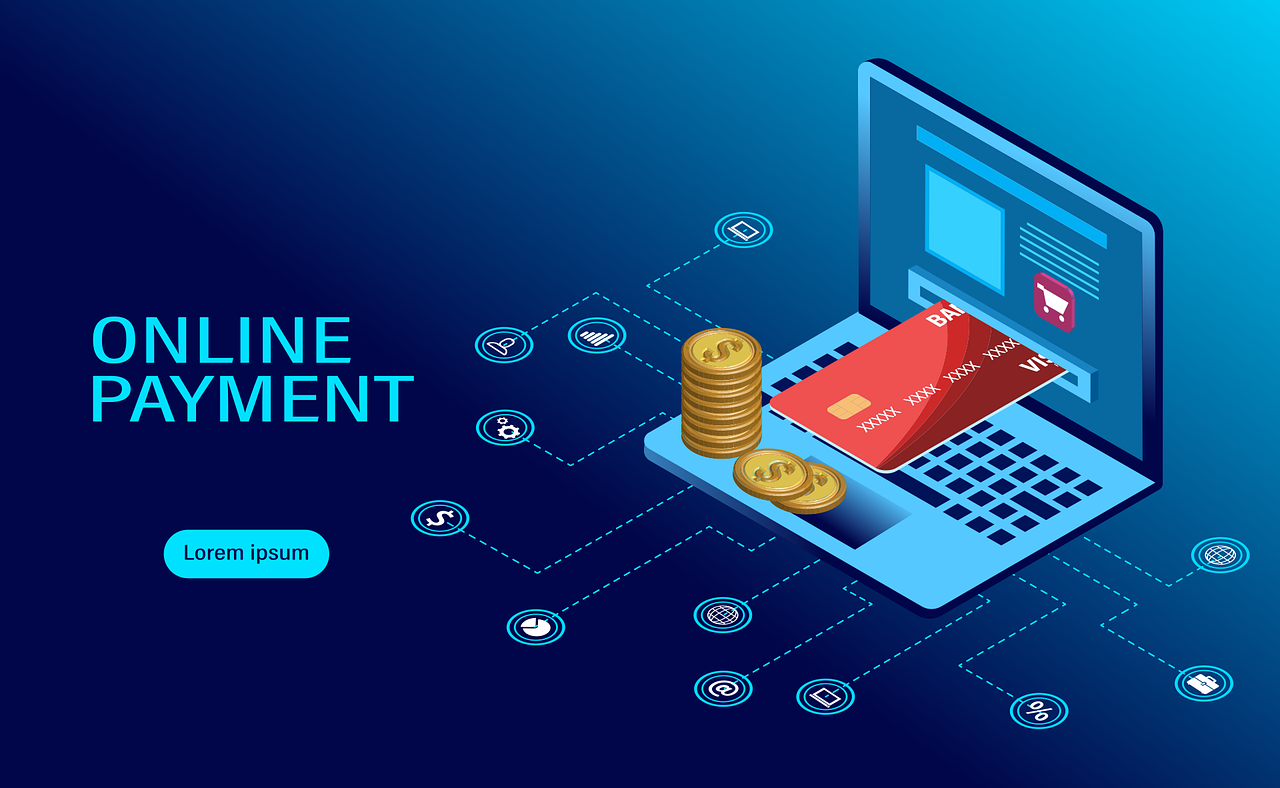Figuring out payment processing as a new ecommerce business can be overwhelming. However, making sure an ecommerce business can actually take payments from customers is the most important part of running a business online.
Processing payments efficiently and effectively is crucial because it is quite literally how a business is paid. Without proper payment processing established, the business risks losing money and exposing sensitive customer information to hackers and scammers.
Ecommerce payment processing is a process that starts with the customer putting in their payment information to the payment portal and ending with the business getting the funds.
- The customer enters payment information at checkout on the website.
- The payment gateway sends the customer information to the payment processor.
- The processor notifies the customer’s bank of the transaction and checks for sufficient funds.
- The transaction is approved or denied by the customer’s bank.
- The payment processor sends the approval or denial back through the payment gateway.
- If the payment is denied, the customer gets notice of the denial. If the payment is approved, they get a confirmation and receipt sent to their email.
Payment processing is done in a secure manner, working with a payment gateway, to ensure that customer information is safe and shielded from potential scammers. Payment processing should leave customers confident that they can purchase online with no risk.
What is an Ecommerce Payment Gateway?
For customer information to be as safe and secure as possible, a payment processor works hand-in-hand with a payment gateway.
A payment gateway is a software, in addition to a payment processor, that adds more security to the online payment process. It checks the customer’s bank for sufficient funds before processing the payment.
In other words, a payment gateway is the tool that determines whether or not a customer’s bank will approve a transaction. After approval, the gateway will obtain the funds, send them back to the payment processor, and finally land in the business account.
Having a payment gateway is necessary for an ecommerce business because credit and debit card purchases are the main way they can accept payments from customers. Without a payment gateway, customers have a huge risk of their information being exposed to hackers.

How Are Payment Processors and Payment Gateways Different?
It might seem like a payment processor and a payment gateway are the same thing, but this isn’t the case. While they both play similar roles in the payment process, there are some key differences between the two.
- A payment processor executes the payment to get the funds from the customer and send them to the business
- A payment gateway approves or denies the transaction between the customer and the business
- A payment processor works behind-the-scenes during the payment process
- A payment gateway is what customers see when they input their information
Another huge difference between a payment processor and payment gateway is that a business can use more than one payment gateway, but should use only one payment processor.
Using Multiple Ecommerce Payment Gateways
Implementing more than one ecommerce payment gateway allows customers the flexibility they desire while also giving businesses the opportunity to be innovative.
For example, one customer might like to use their credit card online, but the next prefers to use PayPal. Not accepting one of their preferred payment methods can prevent them from shopping.
Using multiple payment gateways can also reduce the chance of an outage on a website. If one payment gateway goes down, there are still other ways that allow a customer to make their payment.
While there are plenty of benefits to using multiple payment gateways, there are also some drawbacks to consider before adding more than one to an ecommerce checkout process.
There might be some integration issues when using more than one ecommerce payment gateway. The development and setup process can be a little tricky sometimes, and it gets harder when you add more payment partners.
It also takes more time and effort to reconcile each payment gateway. With more payment gateways comes more merchant accounts, and more manual work needs to be done to avoid errors during the reconciling process.
In order to determine if a business needs multiple ecommerce payment gateways, it is important to understand the business needs. It might be right for one business, but not another, so it is best to research before committing.

Benefits of Ecommerce Payment Gateway
Some businesses might think they don’t need a payment gateway if they have a payment processor. However, this isn’t true. It is recommended to have both a payment processor and a payment gateway.
Knowing the benefits of a payment gateway can help a business realize they actually need one. Some benefits of using an ecommerce payment processor include:
- Secure payments. There are several security steps in place for the business and customers
- Convenience. Payment gateways give customers the convenience of using their preferred payment method
- Customizable. Businesses get the opportunity to customize their checkout process with a payment gateway
- Quick transaction processing. A payment gateway removes the need for manual payment entries
- Connect to website shopping cart. Payment gateways seamlessly connect with an online shopping cart
- Protects against fraud. Both the customer and business benefit from fraud protection
- Accept recurring payments. Perfect for subscription-based services
What to Look For in an Ecommerce Payment Processor
Just as with anything else a business needs, it helps to understand what to look for before starting the research process. First, evaluate the needs of the business, then consider the following factors when looking for a payment gateway for a business.
Initial and Monthly Cost
Before committing to a payment gateway, it is essential to make sure the business can afford it. There is more to consider than just the initial start-up cost of the gateway. Most also charge monthly and transaction fees.
Make sure the monthly subscription fee for the payment gateway service is affordable for the business, and check to make sure the transaction fees are low and competitive with other options.
Card Types Accepted
While the most used credit and debit cards are Visa, Mastercard, and American Express, some customers might have a different type of card they would like to use. For example, Discover is another popular credit and debit card that a potential customer might be using.
Different payment gateways allow different cards to be accepted. Consider the customer base of the business and look for a payment gateway that offers a wide range of credit and debit card options.
Payment Holding Time
With debit and credit cards, the money will come out of the customer’s account immediately, but the payment gateway holds the payment before releasing it to the business. This is usually in case the customer requests a refund or a chargeback within the first few days after ordering.
Holding time can vary, but it is typically between one business day and seven business days. If the business needs the money quickly, look for a payment gateway with a lesser holding time. If the business doesn’t need the money quickly, a longer holding time with other benefits will work fine.
Support for International Transactions
If the business needs to be able to accept different currencies for international transactions, make sure the payment gateway can handle international transactions. Some payment gateways only handle one currency, so be sure to look for this is necessary.
Subscription Ability
If the business offers subscription-based services, it is important to make sure the chosen payment gateway allows recurring billing. This means the payment gateway needs to be able to safely and securely store customer information to automatically charge the account on the agreed upon date.
Hosting
Payment gateways can be hosted two ways: off-site or non-hosted.
An off-site hosted payment gateway takes the customer to the payment processor’s website to put their information in. Using a hosted gateway is a great way to reduce risk of stored information being stolen from the business website.
A non-hosted payment gateway allows customers to put their information on the business website instead of being routed to the payment processor’s website. This is a better option for businesses that want to customize and have control of the checkout process.
Security Level
Payment gateways have different levels of security. Research the payment gateway to ensure it is PCI compliant, meaning it has all of the necessary requirements to protect credit and debit card data efficiently and effectively.
Transaction Limits
Some payment gateways limit the transaction amount a business can process each month. This limit won’t usually impact small businesses, but it will impact businesses that do a large number of transactions. Make sure the payment gateway chosen can handle the needs of the business.

Start Processing Payments with Ecommerce Payment Processing Today!
Ready to start processing payments online as an ecommerce business? Bankful offers payment processing for businesses of all kinds, no matter the needs. Enjoy intelligent processing, easy integration, and affordable pricing.
Check out Bankful now to learn more!


